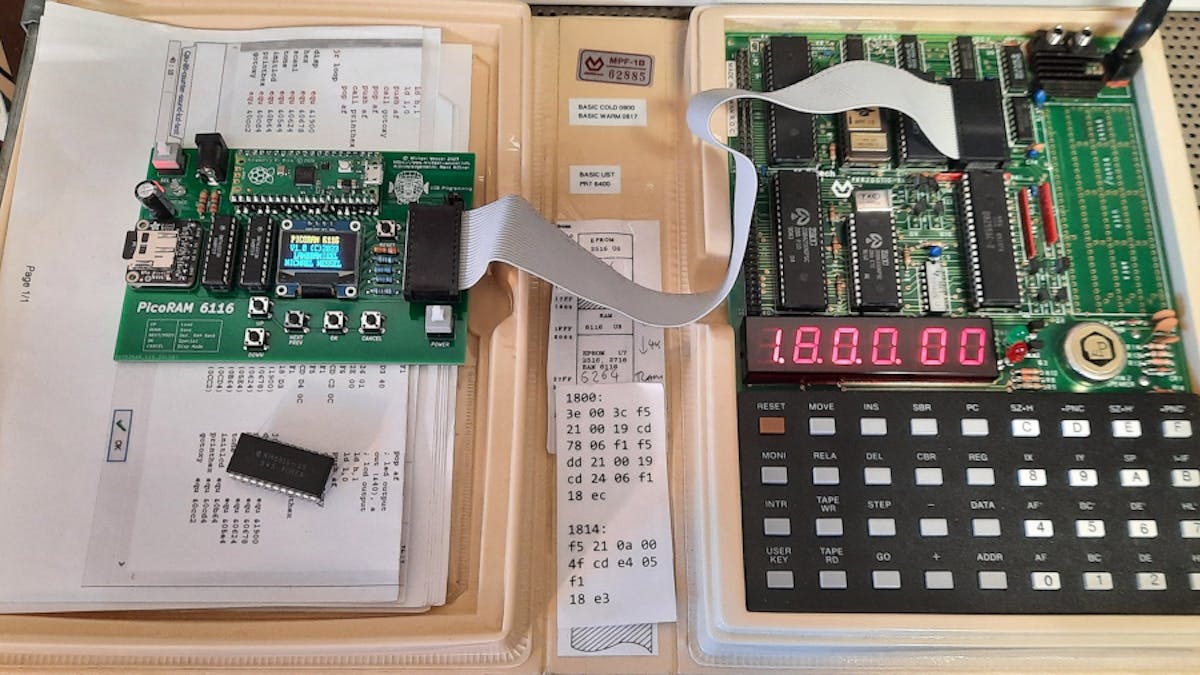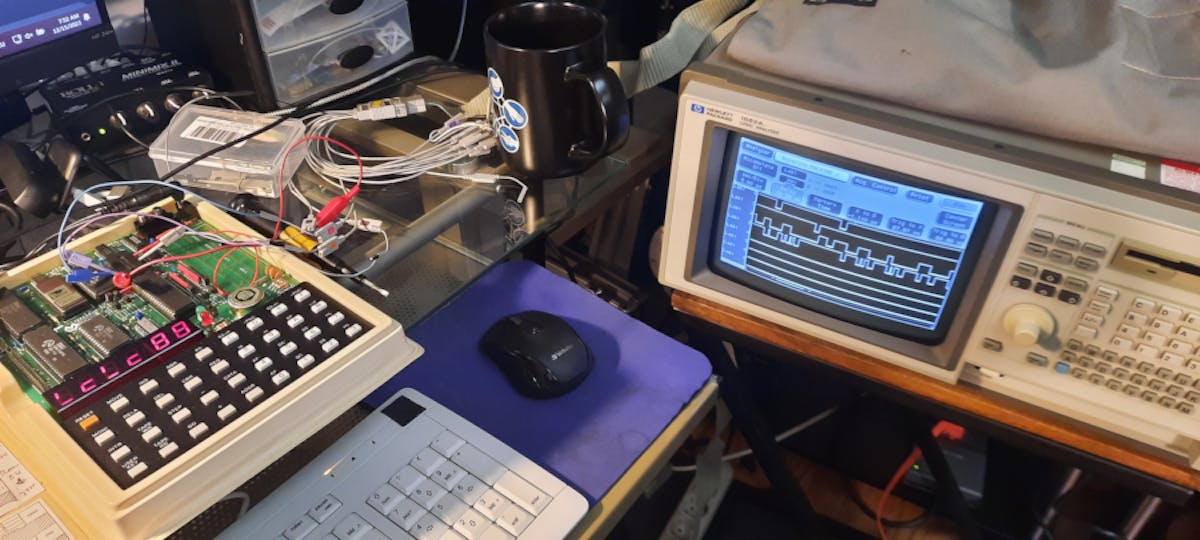Michael Wessel's Raspberry Pi Pico-Powered 6116 SRAM Emulator Gives Vintage SBCs a Major Overhaul
Though tested with a Micro-Professor MPF-1B, this clever RAM-replacement and storage board should work with any 6116-based machine.

Vintage computing enthusiast Michael Wessel has turned a Raspberry Pi Pico into static RAM (SRAM) emulator and SD card storage interface for the Multitech Micro-Professor MPF-1B — bringing with it some serious quality-of-life bonuses.
"Give your Micro-Professor MPF-1B (and other machines) a versatile SD card interface — no more cassettes," Wessel writes of his creation. "Emulate 2kBs of 6116 SRAM with a Raspberry Pi Pico and use an SD card for storing and loading full memory dumps! Its first use case is to emulate the U8 2kB system RAM from 0x1800 to 0x1FFF on the Micro-Professor MPF-1B. You won't need the cassette interface any longer — just use the SD card."
Launched in 1981 by Multitech, which still makes computers today under the more recognizable name Acer, the Micro-Professor MPF-I was a Zilog Z80-based single-board computer which aimed to teach the core concepts of programming for the chip. The device's output was shown on a six-digit seven-segment display, while programs could be saved — slowly — to cassette tape.
It's this slow storage medium Wessel's creation replaces, bypassing the machine's own storage system in order to load and save directly to RAM near-instantaneously — by using a Raspberry Pi Pico's RP2040 microcontroller to emulate the machine's original 2kB RAM chip.

"The first challenge was a lack of GPIO [General-Purpose Input/Output] pins on the Pico," Wessel writes of the project. "The 6116 [SRAM chip demands] a whooping eight bits of data IO, 11 bits for the address bus, plus OE [Output Enable] and WE [Write Enable] — 21 GPIOs of the max. 26 that the Pico offers."
Given that Wessel also wanted to offer a user interface with an OLED display, and storage on an SD card slot, additional GPIO pins were required — which were provided through multiplexing the address bus using two 74LS373 eight-bit latches. "The two latches are basically just used for their tri-state/High-Z ability," Wessel explains, "I am not even using them as latches."
This isn't the first device Wessel has built from a Raspberry Pi Pico in order to offer quality-of-life improvements for vintage computers. Back in September he unveiled an add-on for the Busch 2090 Microtronic Computer System, the PicoRAM 2090, which aimed to work around the device's painfully slow 14-baud cassette interface with microSD storage.
The final device works perfectly on a real Multitech Micro-Professor MPF-1B — even pulling its power from the host system directly — and, Wessel notes, should also work "with other 6116-based computers." More information on the project is available on Wessel's Hackaday.io page.
Freelance journalist, technical author, hacker, tinkerer, erstwhile sysadmin. For hire: freelance@halfacree.co.uk.


